Reducing client budget waste and increasing team efficiency with a media planning tool
Anything is Possible · January 2025
Media planning is a complex process involving many teams and platforms, currently the team were using templated google sheets to plan their clients' media, which caused innacuracies, errors, wasted budget and duplication.
After plenty of discovery, we were tasked with increasing the teams efficiency, and potentially creating a product to sell to other agencies.
Working closely with the head of planning, and numerous experts that were involved in the process, we designed and built a tool that would allow the team to plan media for clients in a more efficient and accurate manner. Not only allowing the team to be more efficient, but also allowing clients to view and suggest changes, be billed accurately, and have a transparent view of their media plan.
Timeframe: 3 months
My roles:
Product DesignFront-End Development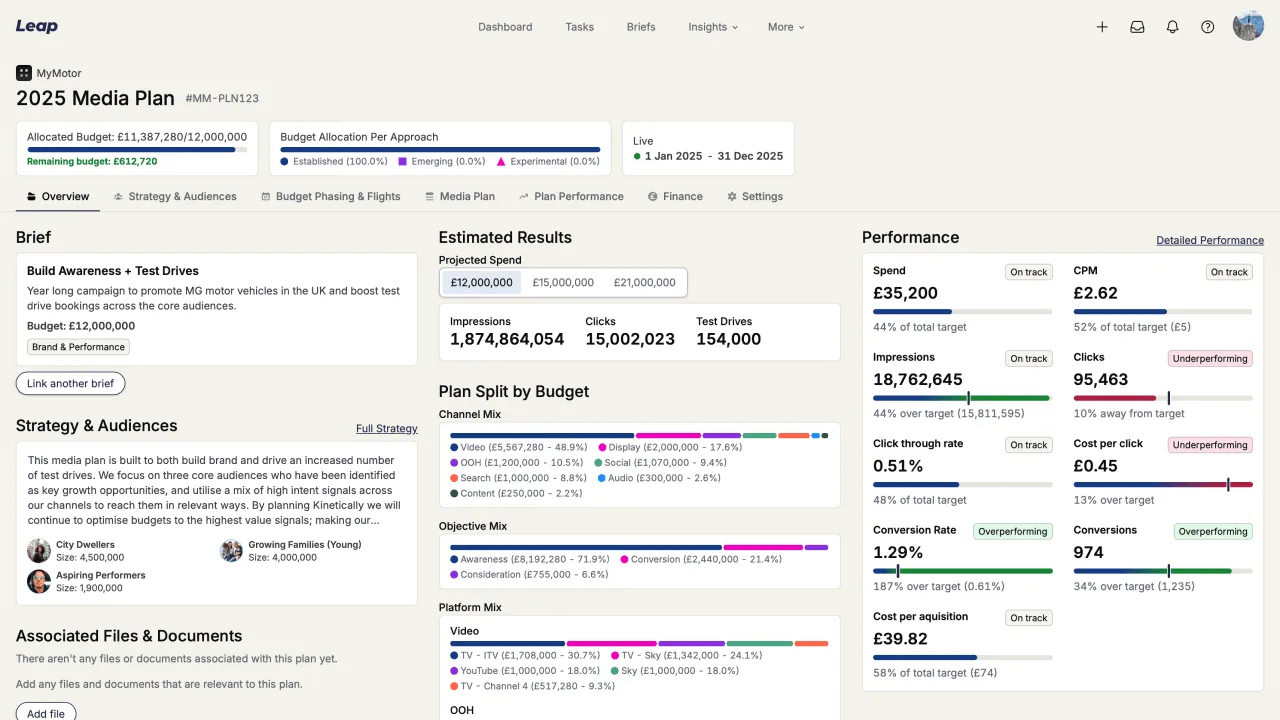
From brief to plan
A brief is always the start of a plan, I designed a flow that allows a media plan to be auto-populated from a brief, then changed over time. When a brief reaches a particular stage, I show a prompt to the planner to allow them to create a plan.
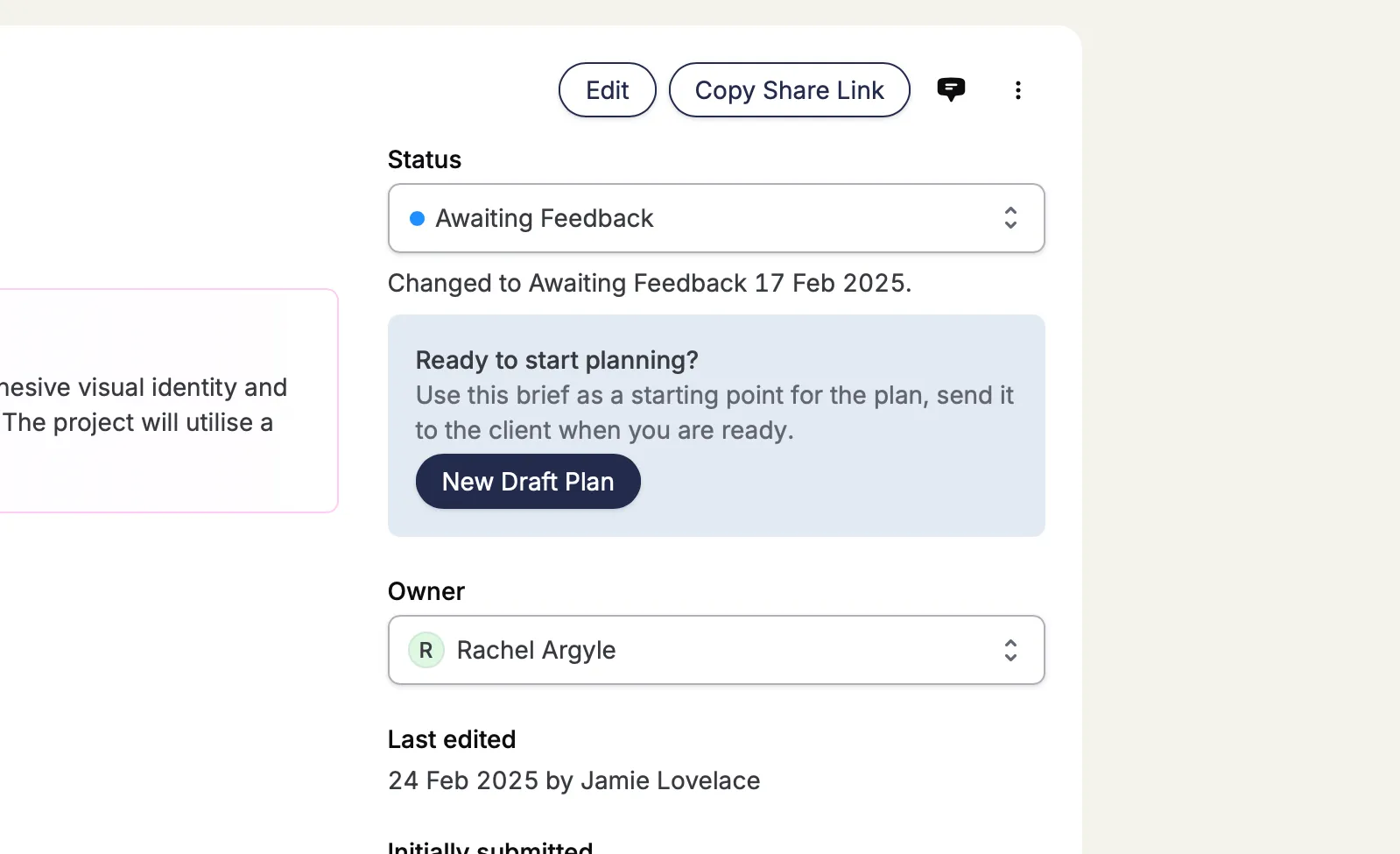
Planning from an audience
An opinionated view of media planning is that it should be done from an audience perspective, rather than a channel perspective. This is because media is a multi-channel process, and planning should reflect that.
Focusing on the audience per line item encourages the planner to think about the audience per line. Whilst creating a plan, planners add their target audiences and then apply them to the line items.Once more data is available, the scope can be expanded to automatically suggest line items that are relevant to the audience.
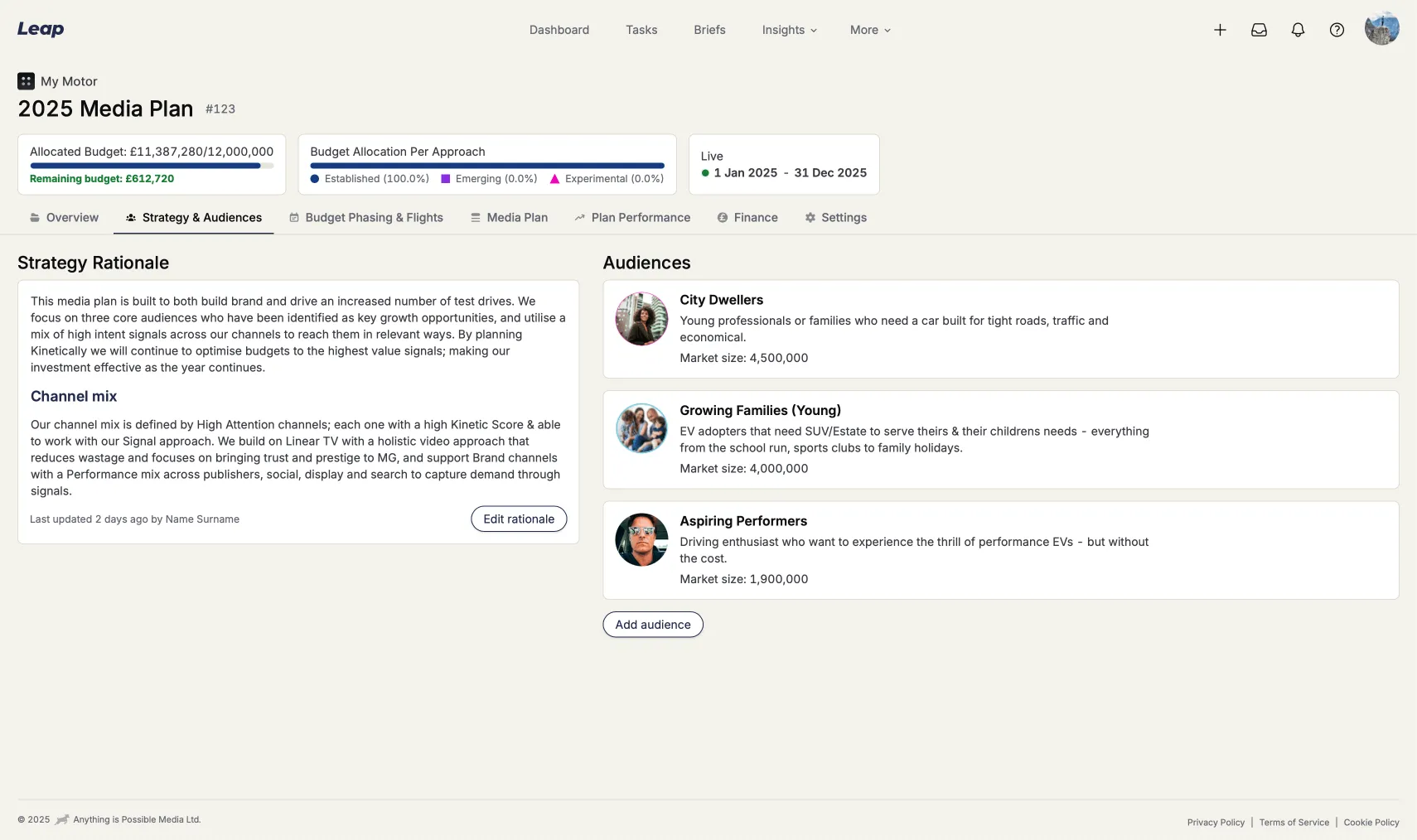
Budget phasing and flighting
Plans are typically created in a spreadsheet, with the dates and how the budget is being spent, a bit of an tacked-on column at the end. After speaking to planners, I discovered this is a very important part of the planning process, and typically done first, before any of the data estimates are added.
During a campaign, advertising may want to be phased into on and off periods, this is called flighting. I purposefully split this out from the data points of the plan so the planner can focus on when to run ads, how much to spend, and what other channels are happening at the same time.
Now I had that data, I could display a chart to show how much budget, per channel, is being spent in each month. Giving the planner and client a clear overview of how the budget is being spent leading up to a particular date or event.
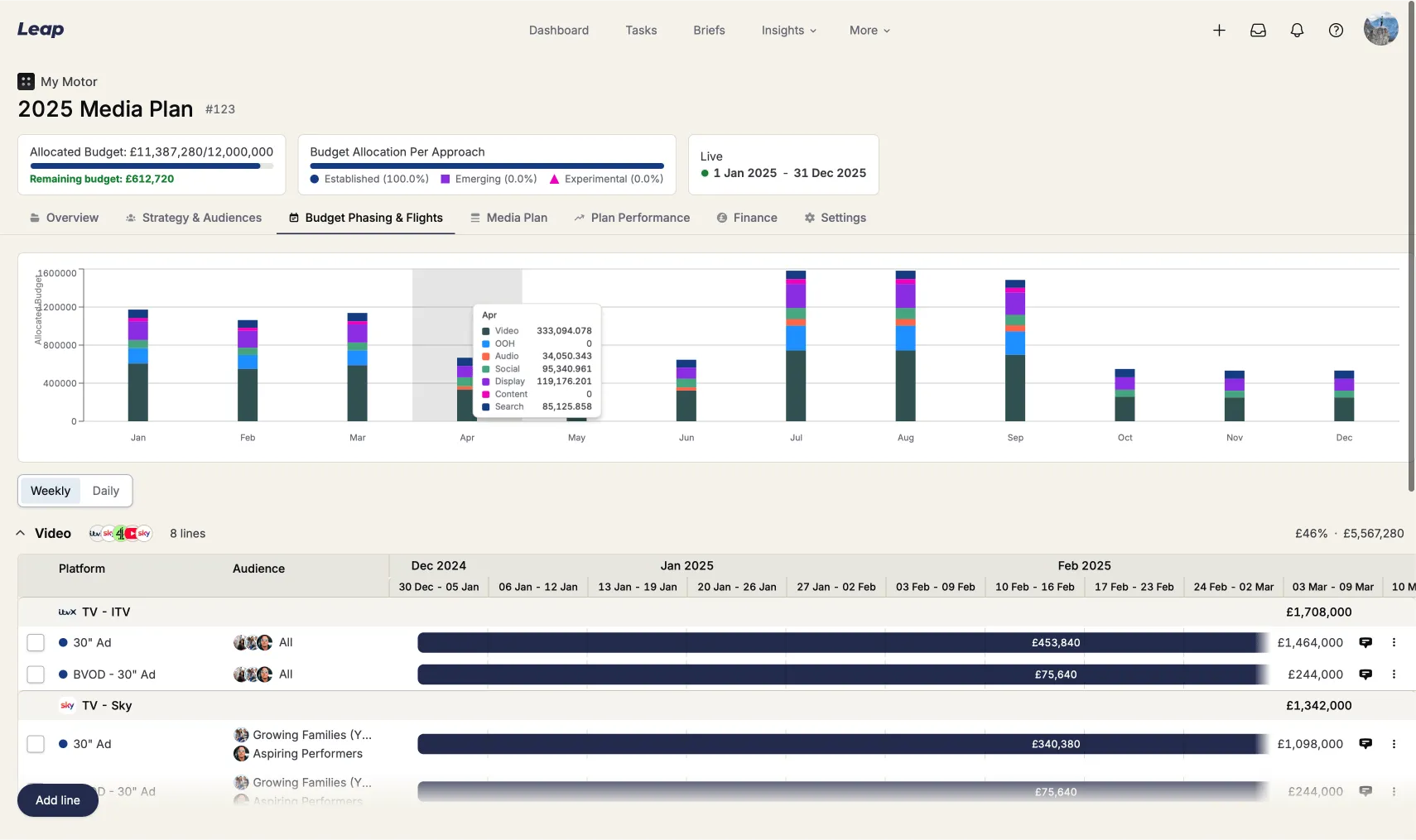
Feedback, adjustments and approval
Feedback and adjustments are a crucial part of the media planning process, and it’s important that the client feels like they have a say in the plan. We focus on comments being able to be added to each line item, which allows the client to add their own comments and suggestions - whilst allowing all team members to see what’s going on.
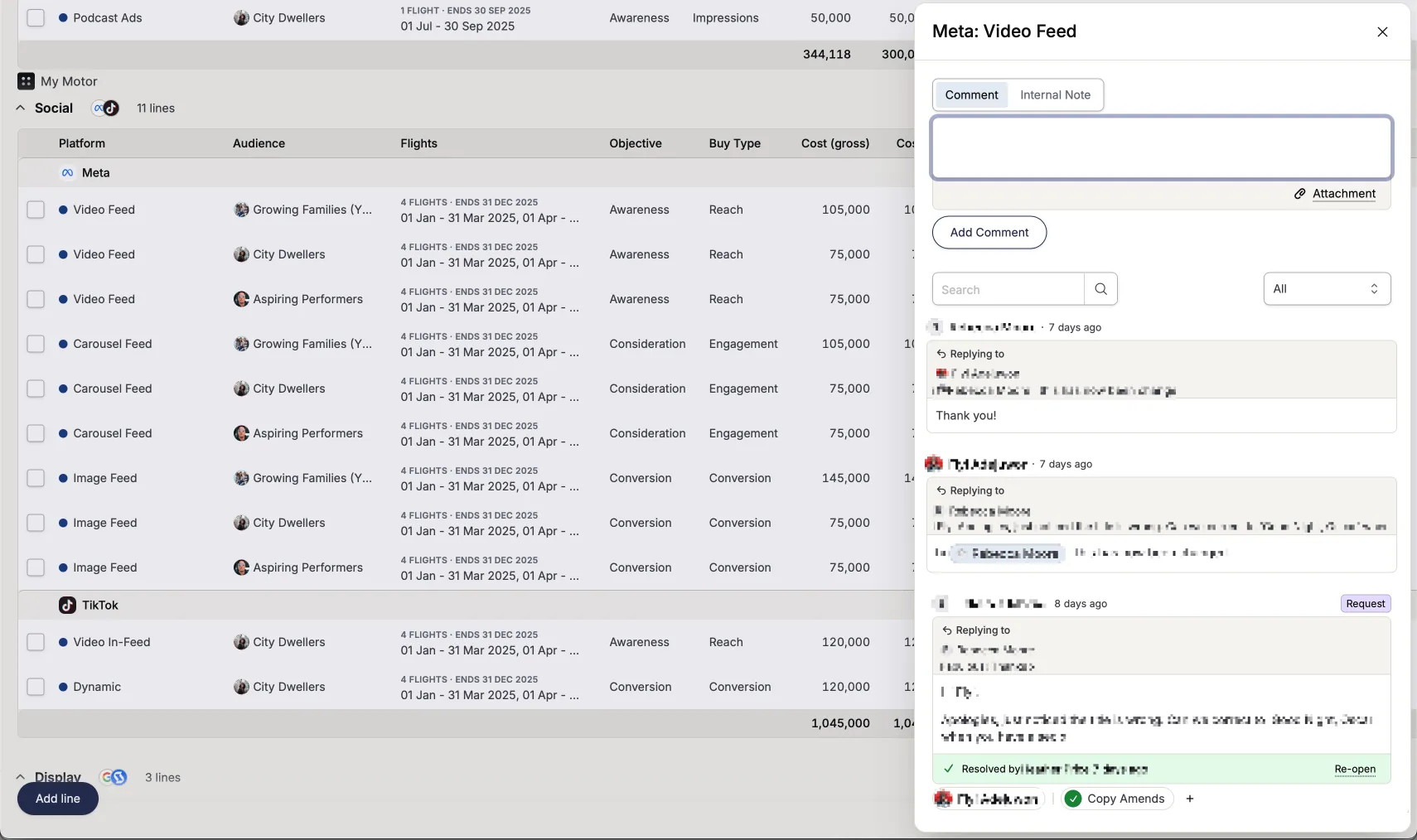
Media planning is a complex, multi-channel and vendor process that can span over a year, when advertising results start coming in, strategies may need to be adjusted. This means approving the whole plan as one doesn’t work. We designed plans to be approved line by line, which then allows a status to be derived for the whole plan, removing another thing to have to keep up to date.
Monitoring and optimising
Key performance indicators are vital in advertising. It’s important that the client can see them. I designed a view that allows the client to see the key performance indicators for each line item, along with a summary of what’s going on. Whilst clients already had a dashboard to view the performance of their plans overall, they often found it overwhelming and wanted a quick view of the performance for their plan.
I show items that are over performing, under performing and on track. Planners can quickly see what needs adjusting to improve the outcomes.
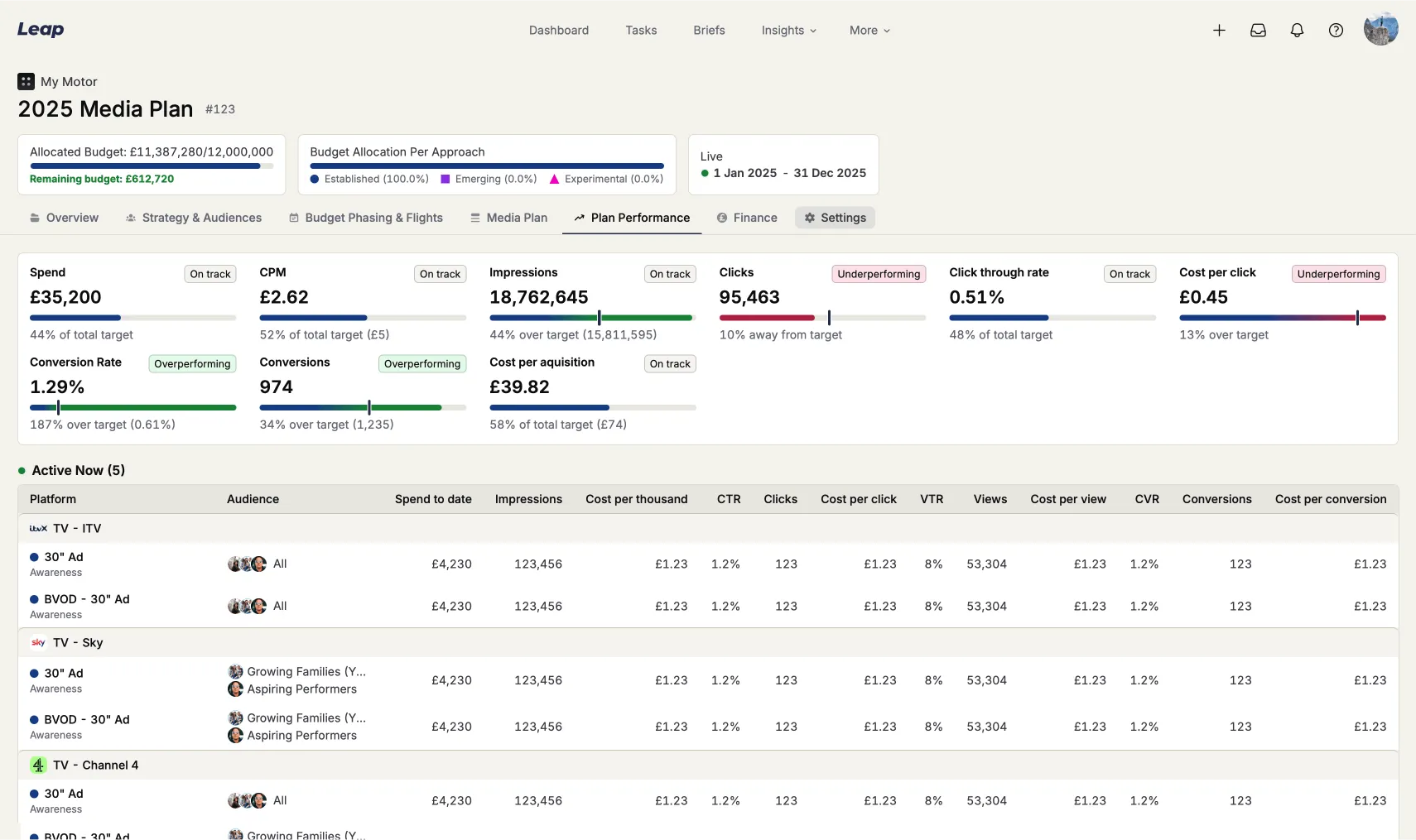
 Jamie Lovelace
Jamie Lovelace